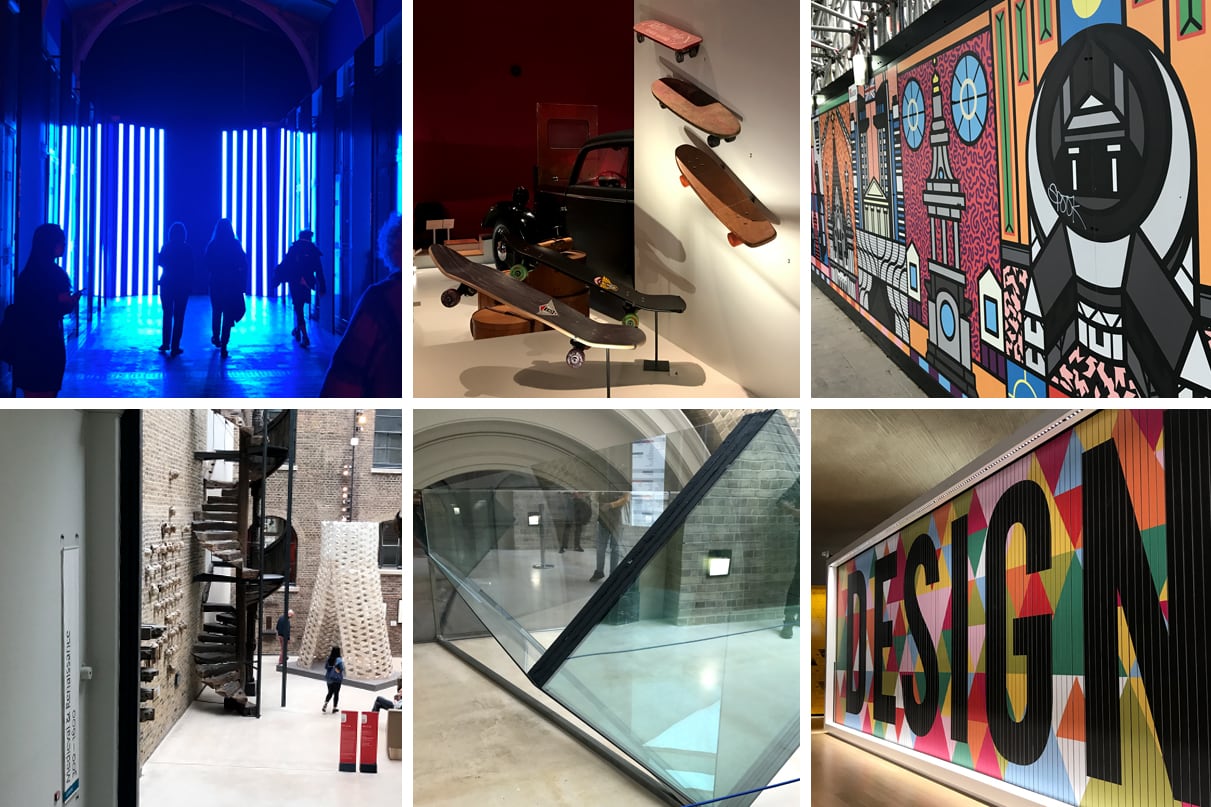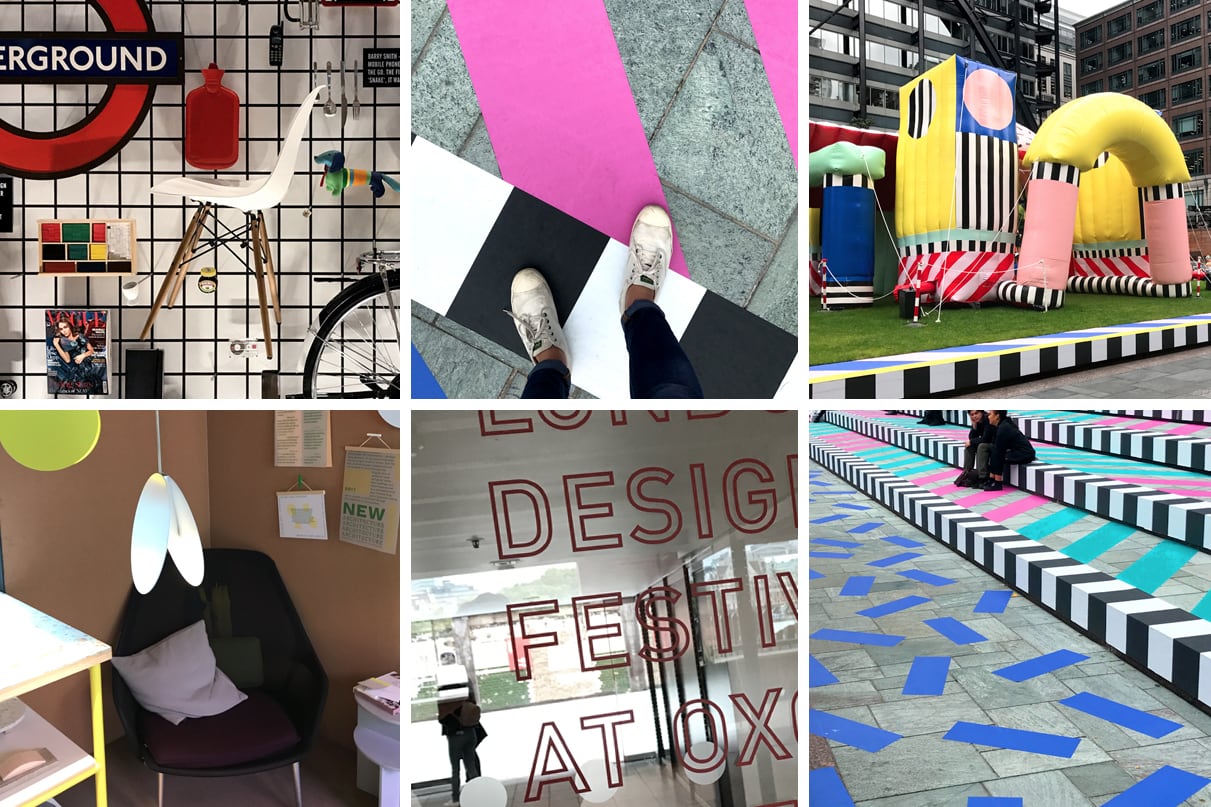
Currently celebrating its 15th year, this was more inspirational and widespread than ever before. With installations, gallery shows, lectures, pop-up shops, I could have easily spent the whole week taking it all in.
V&A
The natural place to make a start seemed to be the V&A, the home and central base of the festival. The first thing that struck me was this year’s LDF branding proudly showcased at the entrance of the V&A with some attractive and perfectly crafted neon typographic signage. The festival’s printed materials also reflected this. Located next to the entrance of the museum, I entered the ‘Plywood: Material of the modern world’ exhibition. This was well worth a visit as it takes you on an interesting journey through the history of plywood design. This featured a range of objects from cars and skateboards, to a mirror dinghy suspended from the ceiling.
Next, I went upstairs, catching a glimpse of the ‘While we wait’ stone sculpture by Palestinian architects Elias and Yousaf Anastas. Then came the real standout piece at the V&A, in the form of the ‘Reflection Room’ by Flyn Talbot. Petr Stanicky’s Evocations was another notable feature, a thought-provoking installation which uses angled glass to create a range of mirror effects.

Design Museum
After the V&A, I headed to the Design Museum. It was my first visit to the museum since its renovation and move to Kensington late last year. The exhibitions informative and fun. The architecture, paired with the airy feeling, open plan interior is a reason enough to make the trip. The Design Museum offers regular workshops and short courses to encourage children to get involved in creative projects of their own. The ‘Designer Maker User’ exhibition is free, interesting and easy browsing for everyone.
‘Villa Walala’
My next port of call was one of the festival’s landmark projects, the greatly anticipated (and highly Instagrammed) ‘Villa Walala’. Textile designer Camille Walala created the brightly coloured installation, a heavily patterned inflatable, set just behind Liverpool Street Station in Exchange square. The concept is to create a sense of the unexpected and invites people to interact by creating a playful space to sit in, wander around and relax. The surrounding steps have had colourful vinyl patterns added to contrast the concrete, which stood out to me aesthetically, more than the installation itself.

‘Urban Cabin‘ by MINI LIVING with Sam Jacob Studio
My last stop was a fleeting visit to the ‘Urban Cabin‘ by MINI LIVING with Sam Jacob Studio. Situated in the OXO Tower Wharf Courtyard, it is part of a larger ongoing project from MINI. The project uses innovative design to explore the creative use of space in a crowded urban environment. Urban Cabin comprised a small shared kitchen and also a micro-library space. It focuses on the importance of shared experiences, being resourceful, in addition to opening up design possibilities.
It has been another fun and inspirational year at LDF.
